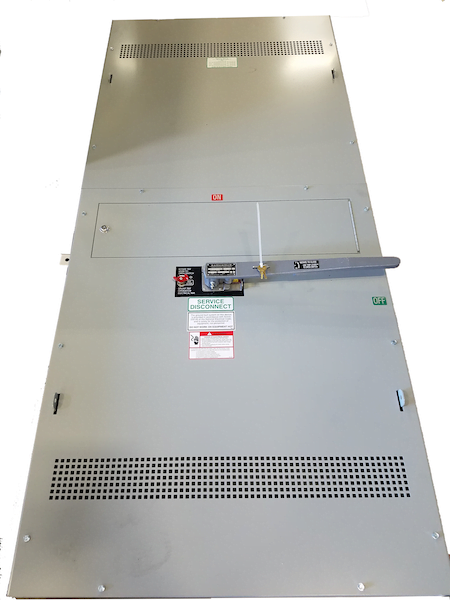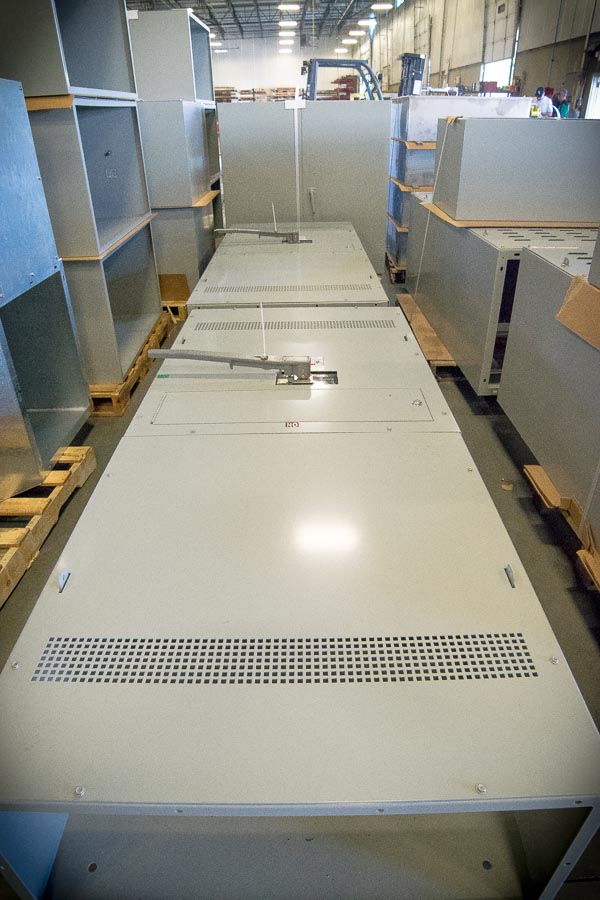Application
- Recommended for use in service entrance switch gear, and/or where there may be high available fault current
- Boltswitches are designed to use class “L” fuses (fuses are not supplied)

Complies with
- UL Type 1 or 3R
- 800 – 4000 Ampere switches are tested in accordance with UL-977 and are UL listed as “fused power circuit devices” under file number E44498
Construction
- Cabinets are constructed of 12 Ga. ASTM A653 Galvanealed – G60-U with all joints and seams welded
Finish
- Powder coated ANSI 61
Available Options
- Top or Bottom Feed
- Ground Fault
- Shunt trip operator
- Key interlock provisions
- Motorized manual operator
- Motorized shunt trip operator

Links to PDF Drawings
NEMA 1 Bottom Fed Pad-Mounted BPS
NEMA 1 Bottom Fed Wall-Mounted BPS
NEMA 1 Top Fed Pad-Mounted BPS
NEMA 1 Top Fed Wall-Mounted BPS
NEMA 3R Bottom Fed Pad-Mounted BPS
NEMA 3R Bottom Fed Wall-Mounted BPS
NEMA 3R Top Fed Pad-Mounted BPS
NEMA 3R Top Fed Wall-Mounted BPS
Bolted pressure switch design
The first bolted pressure switch was introduced in the 1950s. As technology advances, most are becoming obsolete and being replaced as facilities upgrade. The design of a bolted pressure switch is of the knife blade type, with stationary contacts, movable contacts and a switching mechanism to drive the contacts apart, interrupting current flow. The operating mechanism can be manual or pneumatically driven and modern versions operate faster to prevent arcing. Switches are UL rated at 60 degrees at the rated current with spring loaded version being replaced with bolts and cam systems for better contact and reduced resistance.
Bolted pressure switch maintenance
Preventive maintenance is essential to the correct operation of a bolted pressure switch. Since there are mechanical parts involved, dependability is often a concern. Also, considering the frequency of operation is low, the movement need to be kept in a good condition. A maintenance regime including visual inspection of switch contacts and exercise of operating mechanism is, therefore, essential. Lubrication of moving parts on a three to four year cycle also ensures they do not cease. Without adequate maintenance, the operating mechanism of a bolted pressure switch may fail to operate correctly, leading to serious safety concerns.
The three common strategies for bolted pressure switch maintenance are:
- Time interval based maintenance – switch maintenance is carried out according to a schedule.
- Corrective maintenance strategy – maintenance and repairs are carried out when a bolted pressure switch fails, this is the least desirable strategy because failure can occur at any time.
- Condition based maintenance – involves regular inspection and testing, with recording of results. The results then drive the maintenance schedule, with predetermined points of intervention agreed beforehand. This may include an non-invasive thermal imaging survey annually.
More about uses and history of a Bolted Pressure Switch here!
Contact Us

PLANT ADDRESS:
22725 Dulles Summit Court
Suite 100
Dulles, VA 20166
Contact us by email and learn more at sales@NJSullivan.com
REQUEST FOR QUOTATION – LEARN MORE ABOUT OUR CAPABILITIES – SCHEDULE A TOUR OF OUR PLANT